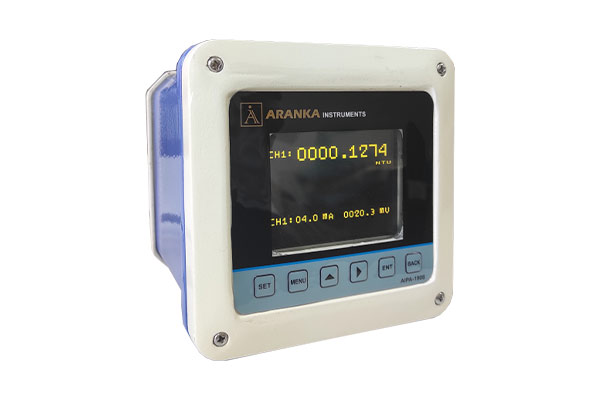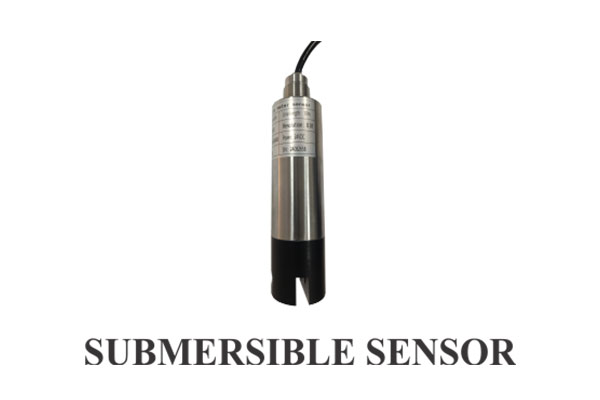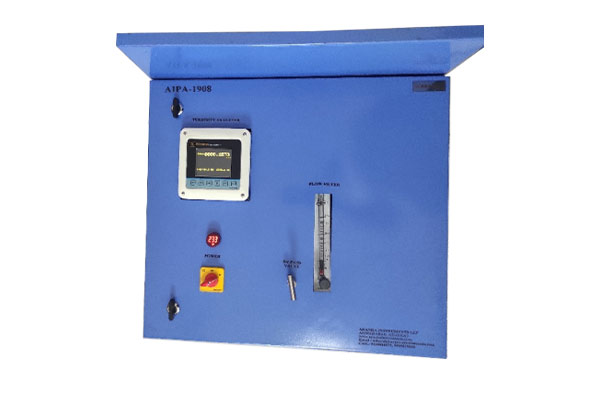


Turbidity Analyzer Manufacturer
We are a trusted Turbidity Analyzer manufacturer and supplier in Ahmedabad, Gujarat, offering high-performance sensors designed for accurate and real-time measurement of turbidity in water and industrial liquids. Turbidity refers to the cloudiness or haziness caused by soil, silt, fine organic matter, microorganisms, and colloids suspended in water. Our analyzers operate on the infrared light scattering principle, where light transmitted through a sample is scattered, absorbed, or reflected by particles in the liquid. The sensor detects the intensity of scattered light and converts it into a precise turbidity value, making it an ideal choice for chemical plants, electroplating units, paper mills, pharmaceuticals, food processing, and water treatment applications.
Built using the 90° scatter nephelometric principle, our turbidity sensors ensure high accuracy, strong anti-interference capability, and stable long-term performance. The infrared LED emitter and 180° detection system minimize the effects of color and ambient light, ensuring reliable measurements even in harsh or outdoor environments. Engineered for durability and ease of maintenance, the analyzer delivers consistent and repeatable results, perfectly suited for environmental monitoring, municipal water plants, and industrial process control systems.
Measurement techniques
- Nephelometric (Scattered Light) Method: This is the most common method, especially for low to moderate turbidity levels.
- A light source shines a beam into the sample.
- Particles in the liquid scatter the light at various angles.
- A photodetector, typically positioned at a 90-degree angle to the incident light, measures the intensity of the scattered light.
- The amount of scattered light is proportional to the turbidity.
- This method is particularly suitable for low-turbidity applications like drinking water and pharmaceuticals.
- Units are typically expressed in Nephelometric Turbidity Units (NTU) or Formazin Nephelometric Units (FNU).
- Absorption (Transmitted Light) Method: This method measures the amount of light that passes directly through the sample.
- A light source and photodetector are placed opposite each other, with the liquid sample in between.
- Suspended particles absorb or attenuate the light passing through.
- The photodetector measures the reduction in light intensity.
- This method is generally employed for samples with higher turbidity.
- Units are commonly expressed in Formazin Turbidity Units (FTU) or Formazin Attenuation Units (FAU).
Total Suspended Solids (TSS) sensors
- These sensors use backscattered light and often incorporate multiple detectors at different angles (e.g., 90° and 135°) to handle high particle concentrations.
- TSS sensors calculate the concentration of suspended solids and the turbidity of the solution based on the scattered light detected.
- Results are typically displayed in units like milligrams per liter (mg/L) or parts per million (ppm).
Robust Design.
Corrosion Resistance.
Easy to Install.
Sampling Method.
| Power Supply | 100 ~260 VAC @ 50Hz. | |
| Display | LCD | |
| Light Source | 880 nm | |
| Light receiver | Photo diode GaSe Type | |
| Measuring Method | 90 Degree Scattered | |
| Calibration | Front Key. | |
| Calibration Method | Slope Standard Method | |
| Measuring Range | Range | Resolution |
| 0-40 | 0.01 | |
| 0-400 | 0.1 | |
| 0-4000 | 1 | |
| Communication Output | RS 485 Modbus RTU | |
| Analogue Output | 4~20mA | |
| Digital Output | 2 nos. Relay 3A 1Co | |
| Analyzer Body MOC | Aluminum | |
| Panel MOC | MS Powder | |
| Sensor MOC | Darlington Black | |
-
Water Quality Monitoring:
Turbidity sensors are widely used in monitoring rivers, lakes, and wastewater to assess water clarity and identify potential contamination.
-
Industrial Processes:
They are used in various industrial settings, including food and beverage production, pharmaceuticals, and power plants, for process control and quality assurance.
-
Environmental Research:Turbidity sensors are used in research related to sediment transport, stream gaging, and other environmental studies.
Frequently Asked Questions (FAQs)
What is a Turbidity Analyzer?
A Turbidity Analyzer is an instrument used to measure the turbidity (cloudiness or haziness) of water caused by suspended particles such as silt, microorganisms, and colloids.
What is the working principle of the Turbidity Analyzer?
It operates on the 90° scatter nephelometric principle, where an infrared light source passes through water and the amount of light scattered at 90° by particles is measured to determine turbidity.
How does the sensor detect turbidity?
The infrared light transmitted by the emitter is absorbed, reflected, and scattered by particles in the sample. The detector receives light in the 180° direction, and the intensity of the scattered light correlates directly to the turbidity value.
What type of light source is used in this analyzer?
An infrared LED light source (typically around 880 nm) is used to minimize the influence of water color and improve measurement accuracy.
What is Nephelometry?
Nephelometry is the technique of measuring scattered light at a specific angle (commonly 90°) to determine turbidity levels in a solution.
In which industries is this analyzer used?
Common applications include:
-
Water and wastewater treatment
-
Chemical and electroplating plants
-
Paper manufacturing
-
Pharmaceutical and food processing
-
Environmental monitoring
-
Municipal tap water systems
What are the typical measuring parameters?
-
Range: 0 to 1000 NTU (varies by model)
-
Accuracy: ±5% of Full Scale
-
Output: 4–20 mA / RS-485 (Modbus RTU)
-
Power Supply: 100–260 VAC or 24 VDC
How often does it require calibration or cleaning?
Only periodic calibration and cleaning are required. The optical structure and stable light source minimize drift and reduce the frequency of maintenance.

